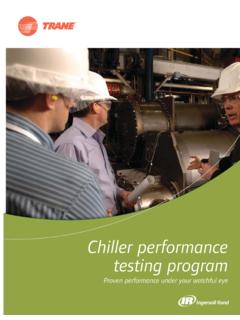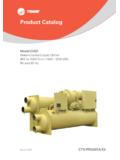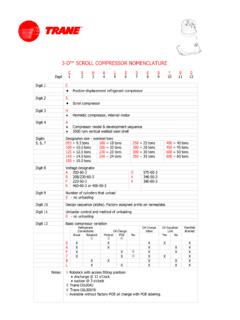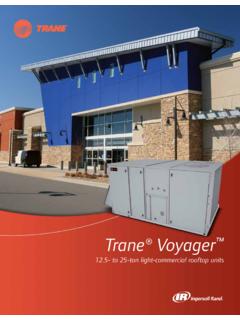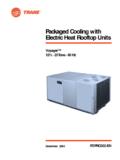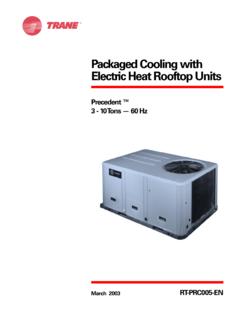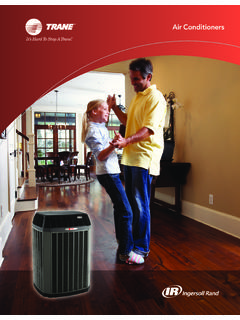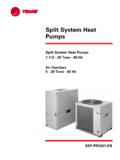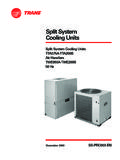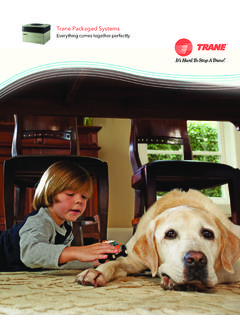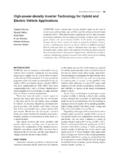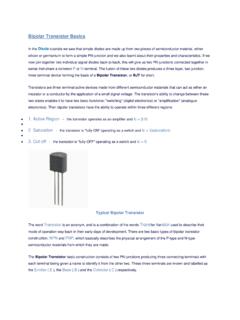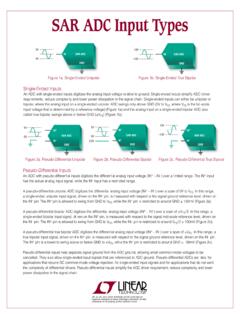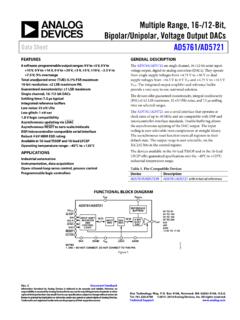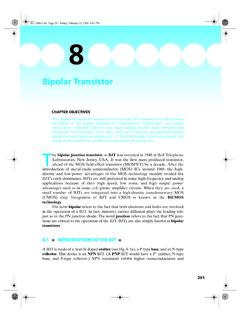Transcription of A Taxonomy of Air-Cleaning Technologies Featuring Bipolar ...
1 A Taxonomy of Air-Cleaning Technologies Featuring Bipolar Ionization2 Many pathogens (including the SARS-CoV-2 virus that causes COVID-19) are transmitted through droplets emitted when a person breathes, talks, sings, coughs or sneezes. Larger droplets tend to fall on the ground or other surfaces within a few seconds because of gravity; smaller droplets or aerosols can remain airborne for longer periods. A person can become infected when they inhale droplets emitted by a sick person or when they touch a contaminated surface and then their face and expose the mucous membranes of their eyes, nose or mouth. Although there is still some debate, the scientific community is increasingly accepting that, in addition to transmission through larger droplets, COVID-19 can be spread by airborne transmission of aerosolized are four major approaches to manage indoor air quality and reduce the transmission of pathogens in an indoor environment: DILUTE & EXHAUST.
2 These two approaches are typically used in combination to relocate pathogens gradually from the occupied space to the outside space. Increasing outdoor air ventilation, , increasing the amount of fresh air (with an assumed lower concentration of pathogens) that is brought in from the outside, dilutes the concentration of pathogens in the indoor air. Increasing the amount of indoor air (along with the pathogens it carries) that is exhausted to the outside maintains building pressure and increases the rate at which pathogens are removed from the occupied space. This combined approach is effective for reducing the concentration of airborne pathogens, but it does not address contaminated surfaces and it may lead to increased energy consumption from the need to condition the outdoor air.
3 In addition, uncontrolled ventilation can increase humidity levels in the room, which may contribute to the creation of mold and, under certain conditions, potentially facilitate the transmission of other pathogens. Furthermore, depending on the airflow within a room, vortices may be formed and some pathogens may find refuge in areas of the room with reduced airflow and stagnant air. CONTAIN. The third element is to manage indoor humidity as it can support growth of surface-bound and airborne microbes like certain viruses, bacteria and fungi. Keeping relative humidity levels within the ASHRAE -recommended range of 40%-60% maximizes occupant comfort and can reduce the risk of microbial growth. CLEAN. The last and very important pillar includes either: Detaining pathogens so that they cannot reach the occupants of the space.
4 This is what filters do as the air circulates through a filter, the filter retains a portion of the pathogens that reach the filter; the portion depends on the rating of the filter. Like the dilute and exhaust approach, the detention approach does not address contaminated surfaces or pockets of stagnant air. With respect to energy, filters that act at a microbial level ( , MERV 13 or HEPA) typically cause a higher pressure drop and thus increase energy consumption; however, this increase is usually smaller than the one associated with increased outdoor air ventilation. Or attacking/inactivating the pathogen. For example, ultraviolet (UV) light or a chemically reactive antimicrobial substance can inactivate pathogens. There are two general ways of achieving inactivation: Bring the air to the inactivating agent.
5 For example, ultraviolet germicidal irradiation (UVGI), Bipolar ionization (BPI) or photocatalytic oxidation (PCO) systems can be installed in an air handling unit and inactivate the pathogens as the air passes through the air handling unit. This approach does not address surface contamination or pockets of stagnant air. Bring the inactivating agent to the room. The approach is similar to the previous one, but the inactivating agent ( , UV light, antimicrobial substance) is brought into the room. Some of these solutions allow the inactivation of pathogens on surfaces as well as in areas with reduced respect to the last approach mentioned above (bringing the inactivating agent to the room), we can identify two subcategories: solutions for unoccupied rooms and solutions for occupied SpacesSolutions for unoccupied rooms are able to use UV power levels and wavelengths that are potentially harmful to humans or chemicals that are potentially harmful/toxic to humans.
6 Because of the potential harm to humans, these solutions can be applied only on an episodic basis when the room is not occupied, so they are unable to offer continuous protection during periods of SpacesSolutions for occupied rooms can only use Technologies that are within acceptable safety limits for humans. In terms of UV, there are upper-room UV Technologies ; these use UV light at wavelengths (usually 254 nm) and power levels that can be harmful to humans (just like solutions for unoccupied rooms) but shine the light along the ceiling so that humans are out of harm s way ( , not in the light path). The UV light inactivates a portion of the airborne pathogens that find themselves in the light path (the portion generally depends on the light energy)2; however, since the light cannot reach areas where humans may be located, it cannot clean surfaces.
7 Some emerging products are starting to use Far-UVC light ( , 222 nm), which is purported to be both effective in inactivating pathogens3 and within acceptable safety limits for humans, so it can be used for air and surfaces in occupied rooms. The Far-UVC technology is being validated it does not have the established track record of products operating at 254 nm UV (but which can harm human eyes and skin).Another technology for occupied rooms is Synexis . Synexis devices produce hydrogen peroxide (H2O2) in a pure gaseous form (referred to as dry hydrogen peroxide or DHP, to distinguish it from other forms of hydrogen peroxide like aqueous solution, aqueous vapor or mist). Hydrogen peroxide has well-known antimicrobial properties. Synexis devices create DHP from ambient humidity using a proprietary variant of photocatalytic oxidation process.
8 As a gas, DHP can disperse everywhere in a room and inactivate pathogens in the air and on surfaces through oxidation chemical reactions. Similar reactions can also reduce volatile organic compounds (VOCs). The non-aqueous nature of DHP allows it to be effective even at very low concentrations that are 50 (or more) times lower than the safety limit established by OSHA. Thus, DHP is both safe for humans in occupied spaces and ionization is yet another technology for occupied spaces. It produces ions that act as an antimicrobial agent. We discuss this technology in detail in the following Ionization (BPI)What is Bipolar Ionization? Ionization has been studied for almost a century and air ionization products have been available in the market for decades, although the technology has evolved significantly over the years.
9 Despite the length of time in the market and the familiarity of many consulting engineers with the technology, there is still limited understanding of some of the phenomena related to ionization and there are diverging opinions about the efficacy of the technology. The underlying science5 is complex to begin with and this complexity is compounded by the existence of many variants of the technology (i) across manufacturers and (ii) across time, as the technology has ionization uses ions as antimicrobial agents. Ions are atoms or molecules that have gained or lost one or more electrons, so they are electrically charged. Ions form naturally in the environment from such energy sources as UV light, frictional charging by the wind, water droplet breakup (waterfalls, sea waves), electrical discharge from lightning, etc.
10 Bipolar ionization (BPI) refers to Technologies that use an artificial source of energy to produce both positively charged ions (cations) and negatively charged ions (anions). The ions are typically produced by applying voltage to electrodes to create an electric field; as the air passes through the electric field, some atoms or molecules in the air stream may lose or gain electrons and become ions. Different electrical arrangements give rise to different variants of Bipolar ionization devices, , corona discharge, dielectric barrier discharge, needlepoint Bipolar ionization (NPBI ), etc. There are BPI devices that can be installed in an air handling unit or in a duct and stand-alone BPI devices (usually portable) that operate in a ionizers can have an effect both in the vicinity of the device, where the electric field is applied, and in the occupied room, as ions disperse throughout the space.
